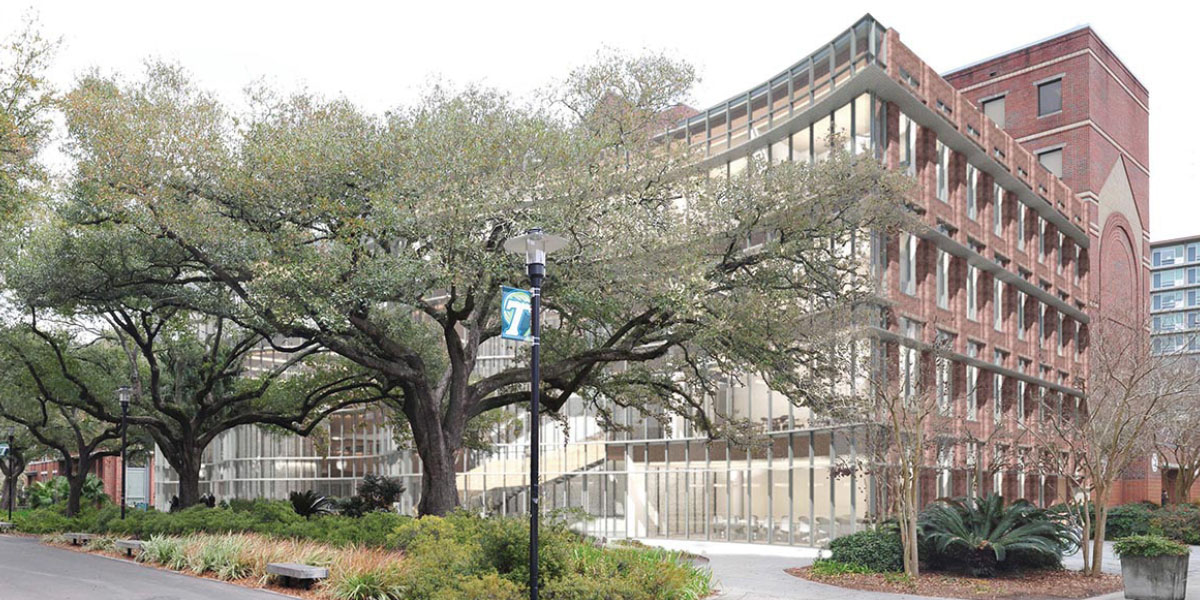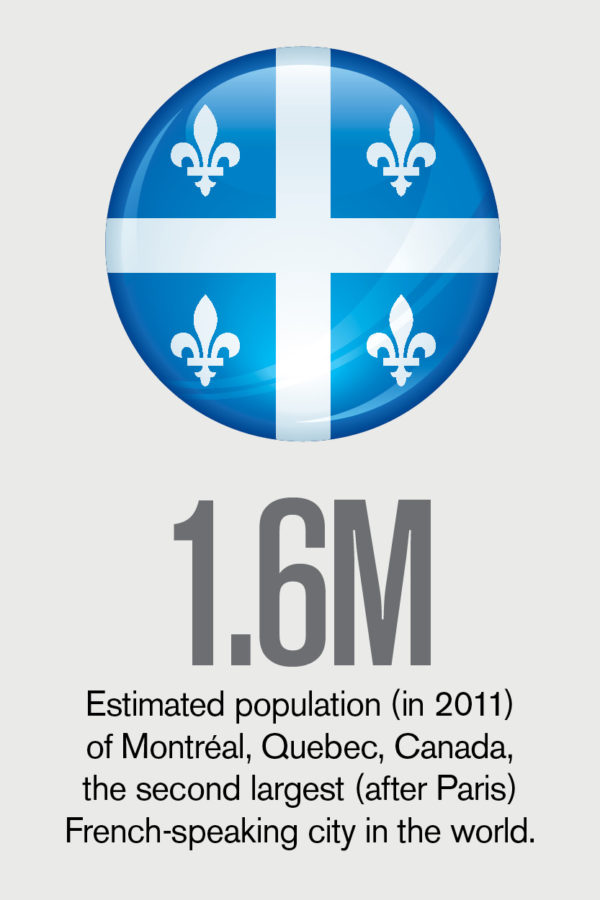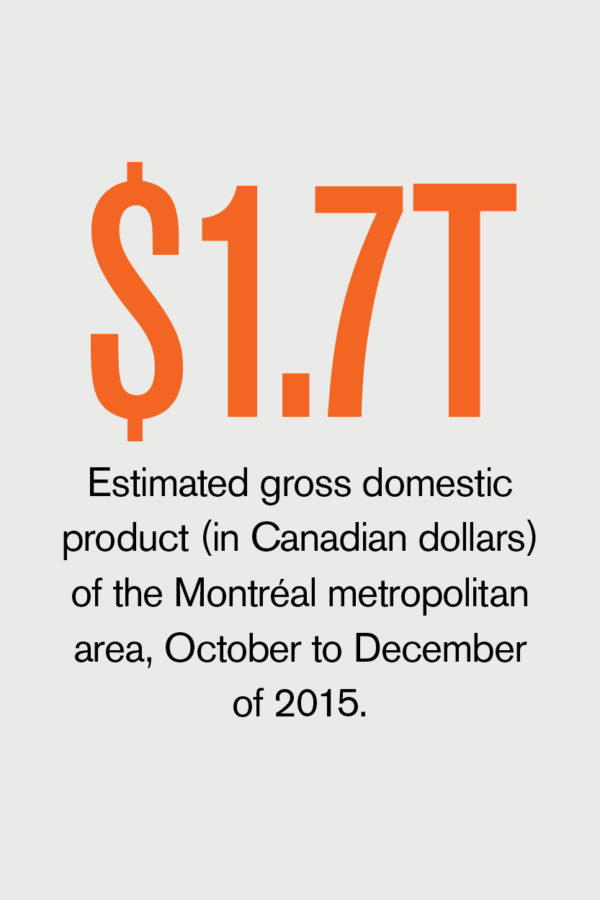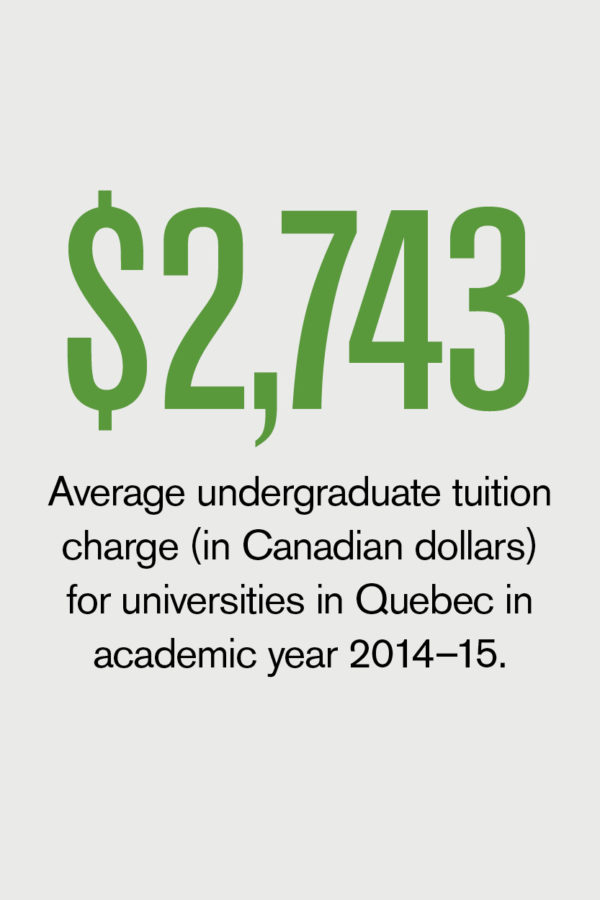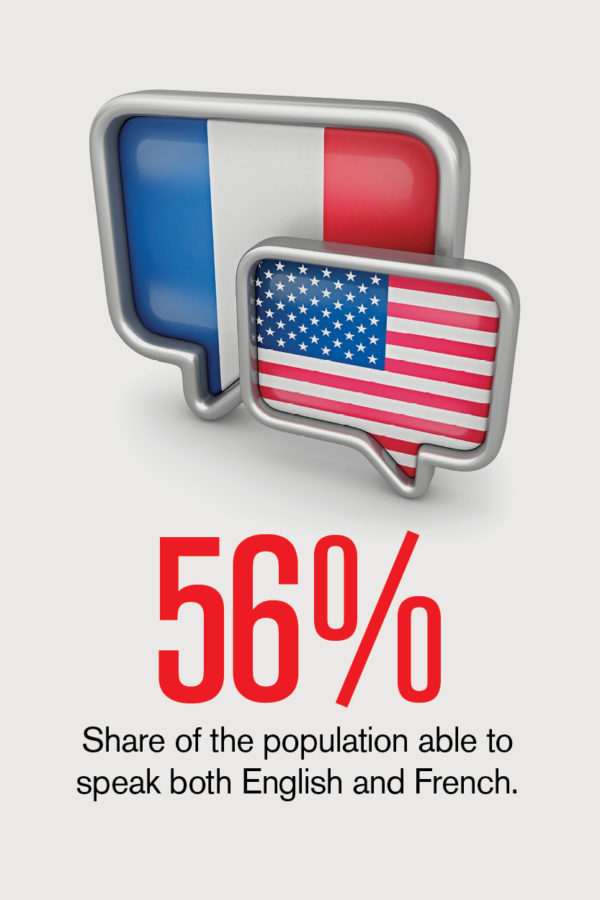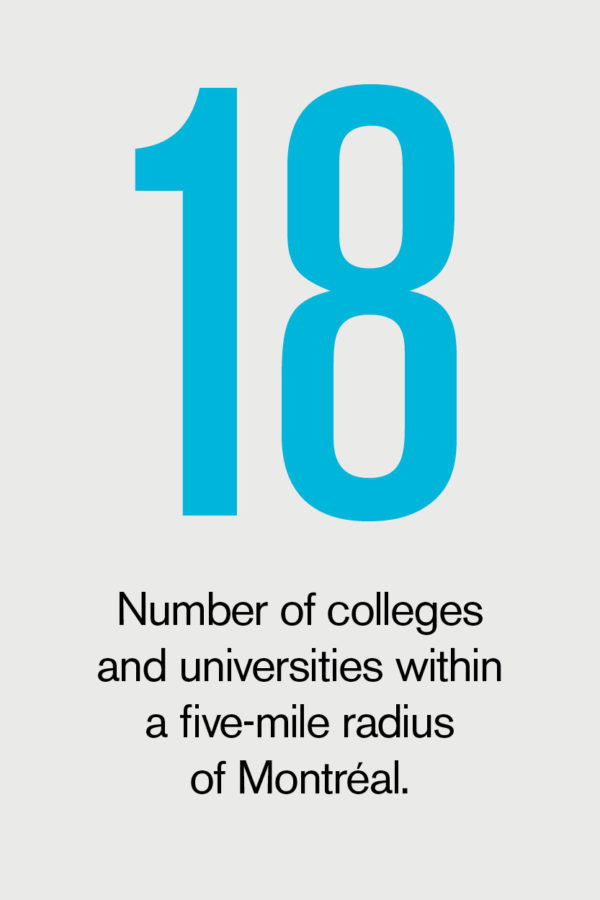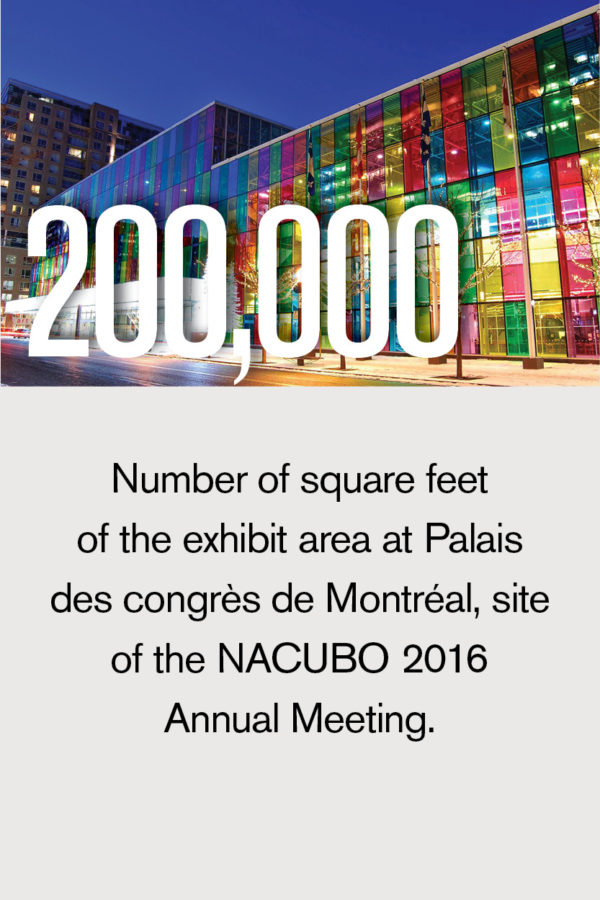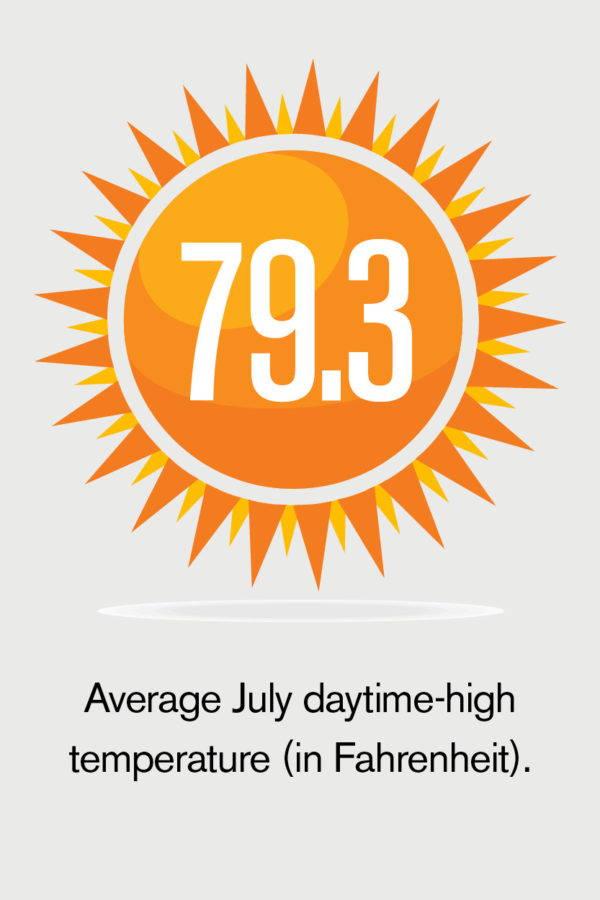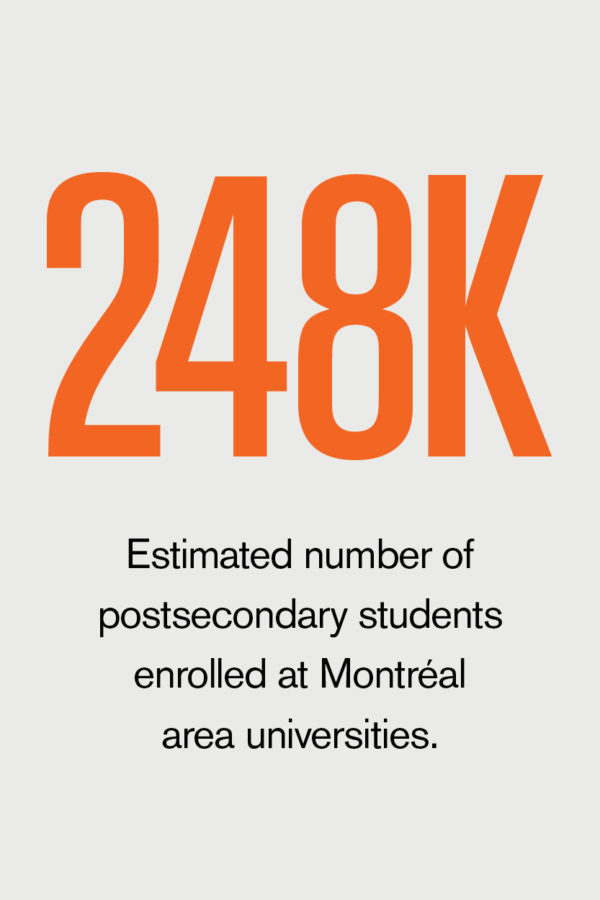The A.B. Freeman School of Business at Tulane University, New Orleans, has launched a major expansion and renovation to meet the needs of a rapidly growing student body. The construction project will include extensive renovations to about 40,000 square feet of existing space, and the building of a 45,000-square-foot, four-story addition. By November 2017, Freeman’s two-building footprint will become a unified structure known as the Goldring/Woldenberg Business Complex.
The $35 million expansion is a response to enrollment growth, which has jumped by almost 50 percent in the past five years. It’s also an opportunity to transform the student experience to better accommodate new approaches to teaching and learning.
“There was general recognition on campus that our enrollment had been growing, so the need for more space was readily apparent,” says Ira Solomon, dean of the Freeman School. “But it took more debate to show the need for reconfiguring space. Today, a lot of the learning happens outside the classroom in breakout rooms, meeting spaces, and with students working together on projects, and our new space will better accommodate that.”
Driving Student Enrollment Growth
In 2011, Freeman launched a strategic initiative to grow its graduate programs through more aggressive recruiting and by launching new programs, such as the one-year Master of Management degree. The graduate school has also focused on bolstering its global strategic relationships, including a partnership with a university in Latin America. As a result, graduate enrollment has grown from about 300 students to about 600 students.
Also during the past five years, a higher percentage of students nationwide have elected to study business, and Tulane undergraduates have followed that trend, Solomon says. Undergraduate enrollment at Freeman has gone from 1,360 to 2,050.
“Tulane is one of the only research universities in the United States that admits students to the university rather than to individual schools,” Solomon says. “Because we don’t restrict access to the business school, there are no constraints on a student’s ability to choose, and that has also contributed to enrollment growth.”
Managing Challenges
Increasing numbers of students on the rolls is a positive change, but it doesn’t come without challenges. “When you have such rapid growth, you have to worry about whether the resources available will meet the needs of these students,” Solomon says.
Those resources include faculty and staff—and Freeman’s number of tenure-track faculty has grown from 35 to 55—as well as physical space. “We are packed in like sardines at the moment,” Solomon says. “On any weeknight, you can go into the business school and you’ll find students all over the building, gathering in groups, sitting on the floor.”
Obviously, an expansion of physical space was determined to be the right solution for managing growth challenges. But simply adding classrooms—the default solution expected by many stakeholders on campus—was not enough. “We need more classroom space, but we also need reconfigured space to accommodate how students learn today,” Solomon says.
To get buy-in for new types of space, Solomon took a core team of decision makers to visit the business school at Washington University of St. Louis and asked them to read about how today’s business students learn best. “Learning happens indirectly through the professor and more directly, student to student,” he says.
As a result, the new Freeman School will include many open areas for students to convene, a large common area, various sizes of breakout rooms, an expanded career management center, and more space for institutes and learning centers. “No rooms will have seats bolted to the floor,” Solomon says. “All the rooms will allow professors to organize students in whatever architecture they want for that day.”
Throughout the process, Freeman leaders worked closely with the development office “to ensure that the project was fully funded by gifts and internal resources before making the final decision to move the project forward,” says Anthony Lorino, senior vice president for operations and chief financial officer. Because a significant part of the funding for the project will include multiyear pledges, the business school is using an internal loan to cover the cash flow. Tulane’s central business office worked closely with the business school to develop cash flow projections and related financing costs, Lorino says.
By January 2018, the Freeman School will open its new space, says Solomon, with the ability to accommodate more than 3,000 students.
SUBMITTED BY Nancy Mann Jackson, Madison, Ala., who covers higher education business issues for Business Officer
The Andrew W. Mellon Foundation has awarded Stanford University, Stanford, Calif., a $1.5 million grant to support library initiatives to advance the use of linked open data. Stanford Libraries will coordinate a team—representing Columbia University, New York City; Cornell University, Ithaca, N.Y.; Harvard University, Cambridge, Mass.; Princeton University, Princeton, N.J.; and the Library of Congress, Washington, D.C.—in upgrading the current infrastructure libraries use to create, store, and share bibliographic data.
Libraries around the world currently rely on an information communication and storage standard that was developed in the 1960s. Although the system eliminated the dependence on card catalogs and moved libraries to an online environment, challenges to that system have risen with the development of the “semantic” Web (in which information will no longer be intended only for human readers, but also for processing by machines, enabling intelligent information services, personalized websites, and semantically powered search engines).
The grant team will be developing a new, distributed model on Web architecture that “will fundamentally change how libraries interact with the semantic Web,” says Philip Schreur, assistant university librarian for technical and access services at Stanford. “Much of the library’s data has been locked in historic formats that do not allow for it to be connected to the Web,” he says. “Linked data uses basic Web standards to publish data so they can be interlinked and become discoverable on the Web.”
An earlier grant funded work on the part of the same partner libraries to define the issues libraries must resolve in order to shift their data production standards to be compatible with the semantic Web. The current project will allow for the first concrete steps in this transition.
Collaboration is growing among university libraries, even to the extent of mergers and partnerships. Look for an article in July-August Business Officer describing an unfolding partnership between the Georgia Institute of Technology and Emory University, both in Atlanta, to create a shared library collection. “When we decided to start the partnership,” says Yolanda Cooper, university librarian at Emory, “the future goal was not just to have a facility, but to start to share things like collections, staff, and operations, so that we can leverage the services that we provide across both institutions.”
College and university presidents who proactively engage their boards and utilize outside resources can significantly improve the quality of their board relations, and ultimately the quality of their institutions,” notes the 2014 article “Solving the Governance Conundrum,” in The Presidency, published by the American Council on Education, Washington, D.C.
The article goes on to explain that when Mills College President Alecia A. DeCoudreaux first arrived on campus in 2011, one of the first things she initiated was a formal review of the institution’s governance structure, in order to develop a mutual understanding of the college’s strategic priorities and to build stronger relationships between administrators and board members.
As a business officer, what steps can you take today to build greater understanding around such a shared governance model? Here are three steps that you can suggest to engage boards, faculty, and staff in developing a regular dialogue to build collaboration around meeting the mission of your institution.
Emphasize Education
At the heart of developing or improving a shared-governance model is the commitment to informing and educating stakeholders. Encourage your president to identify an initiative in which the board and faculty each play a role and use this to initiate a group dialogue. Potential ways to do that include:
- A board retreat. Bring board members together to review the existing governance model and clarify the board’s role and responsibility. Consider reviewing the institution’s charter to ensure that it’s clear, in writing, that the board has fiduciary responsibility over all matters and delegates that authority when appropriate. Most importantly, use this as an opportunity to educate board members as to why and how faculty can be included in the governing process.
- Faculty interaction. Bring the faculty together and conduct a similar educational event. In this case, it will be important that faculty leadership fully understands the board’s role and can represent this accurately to the larger faculty.
- Senior leadership immersion. Use a cabinet meeting or gathering of senior officials on campus to conduct an education exercise to help participants understand what shared governance means and what dynamics it requires of all stakeholders.
Practice Identified Principles
Case studies are a means to engage people in a topic, so that they learn the practical elements of a concept or approach. In this case, identify a topic or event in which each body can engage in the shared governance model to learn the practice of collaboration. Your strategic planning process, accreditation, or other institution initiatives are excellent examples of activities that reflect how shared governance is being practiced.
Suggesting questions for each stakeholder group in the governance process is useful for defining clarity and responsibility.
- The board of trustees. Guide the board through a series of questions:
- What is our fiduciary responsibility on this topic?
- What do we see as the boundaries of our role?
- Can we come to consensus on this so that our actions honor the faculty’s and president’s views of our role?
- What can be delegated and to whom?
- Do we have clarity about the outcomes of this initiative?
- The faculty. Use a similar strategy to partner with faculty leadership to guide the academic inclusion in the governance process. Questions for the faculty might include:
- What do we see as the boundaries of our role?
- Is our role clear on matters relating to the proposed initiative, and how can we collaborate with the other leadership bodies?
- Do we have clarity about the outcomes of this initiative?
- Senior administration. The following questions may assist with communication and dialogue among senior leaders:
- Are we clear about the faculty/board role on this matter?
- What is expected of us with regard to the proposed initiative? How can we contribute to fostering dialogue and decision making for the board and faculty?
- Do we have clarityabout the outcomes of this initiative?
To read additional case studies and insights from several higher education institutions, see “A Voice, A Vote, or a Veto.”
Group Reflection
Once each leadership body answers the respective questions, bring together representatives of each group to reflect on how effectively they were able to clarify their respective roles in decision making. Key questions for this meeting can include:
- How has this exercise helped to break down isolated thinking and behavior?
- What did we learn about how we negotiated shared governance on this topic?
- How can we improve on shared governance for future initiatives?
As Mills College’s DeCoudreaux notes in “Solving the Governance Conundrum”: “There was a time when we took for granted that people understood the value—and the cost—of a college degree, but that’s no longer a given. These challenges are causing boards to drill down more deeply into the management of the institutions they govern. As long as boards are doing that in an appropriate way, they are doing the best possible thing for the institution, because we all need to be thinking about these issues and thinking about ways to both provide and demonstrate the value of the education that we are offering students.”
SUBMITTED BY Howard Teibel, Teibel Inc. Education Consulting, Natick, Mass.
The Ohio Federal Research Network has awarded Cleveland State University $1 million to lead a statewide initiative focused on furthering the research priorities and economic impact of federal laboratories in Ohio. The university will partner with Lorain County Community College to provide business development, technology transfer, and industry outreach to four technical centers of excellence to be located at Case Western Reserve University, the University of Dayton, The Ohio State University, and Wright State University.
“By strengthening the technology transfer and commercialization outcomes of federal research conducted in Ohio,” says Jerzy Sawicki, Cleveland State’s vice president for research, “we can promote business development and job creation in our communities and increase the overall impact of federal investment in the state.”
The centers for excellence will conduct research in key areas of technology that are central to aerospace innovation, working in partnership with the Air Force Research Laboratory, Dayton, and the NASA Glen Research Center, Cleveland.
To read more about trends in university research activities, see “Research Parks Redux,” in April 2016 Business Officer.
“For a young, urban research university like Portland State, sustainability has allowed us new ways of defining our work, creating new partnerships, and building stronger synergies across disciplines. It has improved perceptions about our engaged approach to education, helped raise private money, and attracted vital research dollars. And by integrating sustainability throughout our curriculum, we can give students from the humanities to engineering the set of tools they need to bring a sustainable mindset to life after college.”
—Wim Wiewel, president, Portland State University, Sustainable Development Primer for Higher Education Presidents, Chancellors, Trustees, and Senior Leaders, Higher Education Associations Sustainability Consortium, 2016.
Fast Fact
Collaborating on Career Options
For young adults struggling to find work, sectoral workforce development programs may offer a promising alternative, suggests a new report released by the Aspen Institute, Optimizing Talent: The Promise and the Perils of Adapting Sectoral Strategies for Young Workers. The report, presented by the Aspen Institute Economic Opportunities Program and JobsFirstNYC, draws on studies of the effectiveness of initiatives that bring together a mix of business, community-based organizations, unions, community colleges, and others.
Students Recycle 70 Million Pounds, in 2016 Event
Richland College, a two-year community college in Dallas, was crowned the Grand Champion in this year’s RecycleMania competition. The event, the premier waste-reduction and recycling competition among colleges and universities, featured 350 schools participating from 48 states in the United States, the District of Columbia, and Canada, with a combined enrollment of 4.4 million students.
![]()
By The Numbers
Facts About Montréal, Quebec, Canada
Sources: Statistics Canada; Wikipedia; Music Go Go; Global News; and Board of Trade of Metropolitan Montréal



